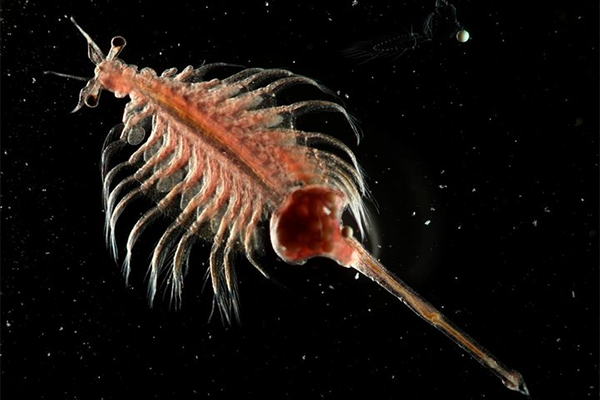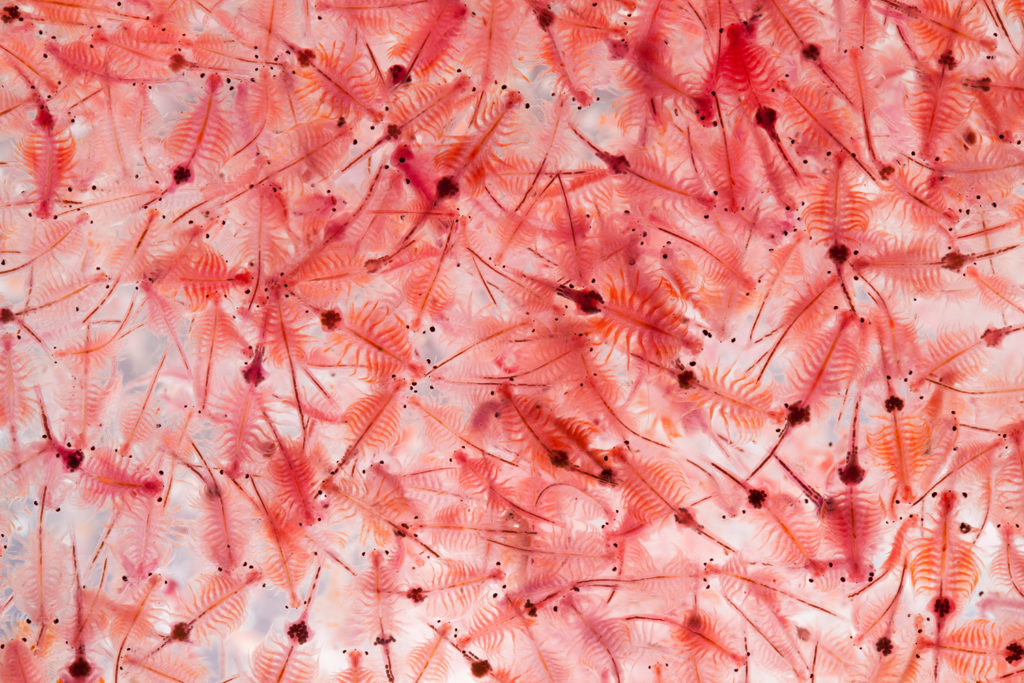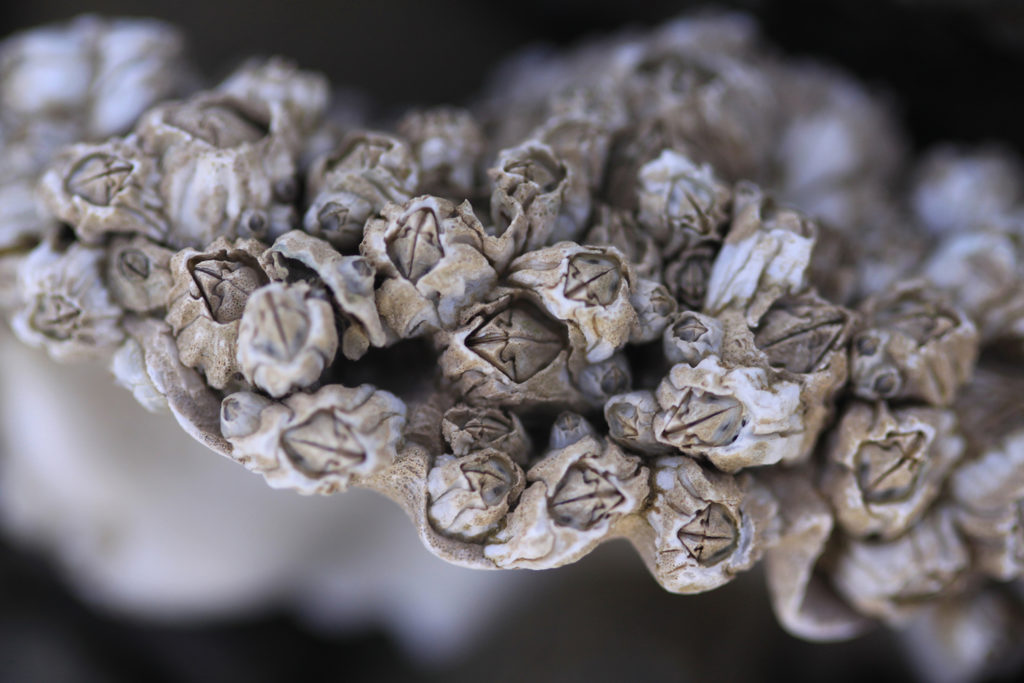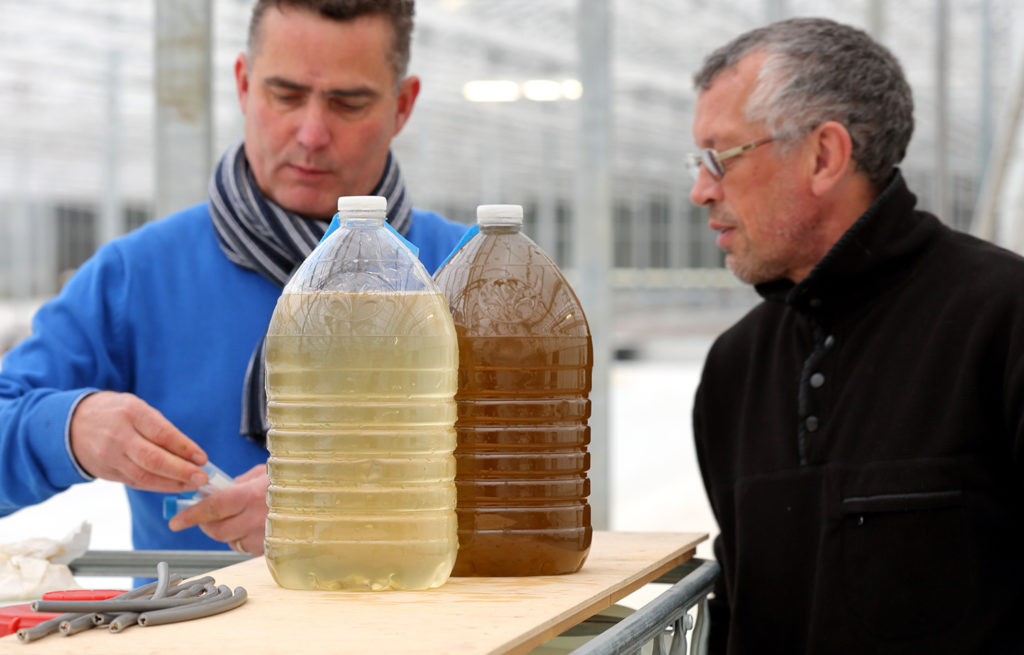Results show significant differences in the content of three essential fatty acids in L. vannamei postlarvae fed with HUFA-enriched artemia

One of the major challenges for the Ecuadorian farmed shrimp industry is to produce high-quality postlarvae (PL) with high growth and production potential. PLs with a high content of unsaturated fatty acids (HUFA) and phospholipids, which improve resistance to stress and diseases, have been identified as those with the best quality.
The enrichment of artemia has a fundamental role for the nutritional improvement of the commercially produced larval stages, as HUFA-enriched artemia contains the necessary nutrients for fish and marine crustacean larvae to improve their growth, survival and metamorphosis success.
Several authors have documented that artemia enrichment with HUFA in shrimp species improves PL quality and survival when exposed to stress conditions such as high salinity. But limited information is available at the histological level about the effects of HUFA on the hepatopancreatic status of shrimp PLs.
This article – summarized from the original publication (Martínez-Soler, M. et al. 2023. Effect of HUFA in Enriched Artemia on Growth Performance, Biochemical and Fatty Acid Content, and Hepatopancreatic Features of Penaeus vannamei Postlarvae from a Commercial Shrimp Hatchery in Santa Elena, Ecuador. Aquaculture Nutrition Volume 2023. Article ID 7343070) – reports on the results of a study that investigated the effects of Artemia enrichment with microalgal emulsions enriched with fatty acids on growth performance, biochemical profiles, fatty acid profiles, hepatopancreatic perimeter, and hepatopancreatic histological structure of a population of Pacific white shrimp (Litopenaeus vannamei) PL raised at an Ecuadorian commercial shrimp hatchery.
Study setup
The artemia enrichment trials were carried out at the BIOGEMAR S.A. facility in Santa Elena, Ecuador. L. vannamei PL (N = 405,000) were procured from a local commercial hatchery and stocked into nine fiberglass tanks. Two experimental microalgal emulsions (MA and MB) were formulated with selected fatty acid content for the artemia enrichment experiments. Commercial artemia were enriched for 18 hours in 25-liter tanks at a density of 250,000 individuals per liter after mouth opening at six hours post-hatching.
PL were fed for 12 days with one of three experimental diets (three tanks per treatment): treatment A (artemia enriched with experimental microalgal emulsion A and dry diet, or MA), treatment B (artemia enriched with experimental microalgal emulsion B and dry diet, or MB) and nonenriched artemia (artemia without any enrichment and dry diet). Each feeding was applied ad libitum to replicate the feeding methods used under commercial production conditions. From PL1 to PL12, the animals were fed an increasing quantity of inert dry diet (2 to 4 grams per tank) and an increasing number of artemia per PL (12 artemia per PL to 20 artemia per PL). During the experiment, subsamples of newly hatched artemia and enriched artemia were collected and analyzed for proximate and fatty acid composition.
For detailed information on the experimental design, experimental diets, animal husbandry, data collection and analyses, refer to the original publication.
Great Salt Lake Artemia fishery becomes first U.S. inland fishery to earn MSC certification
Results and discussion
Results showed that the proximate composition percent and fatty acid profile of enriched artemia reflected the values of the experimental emulsions (MA and MB) used in the artemia enrichment process, especially in the content of essential fatty acids such as docosahexaenoic acid (DHA) and docosapentaenoic acid (DPA). Generally, the fatty acid profile of artemia enriched with experimental emulsions was similar to previously reported profiles obtained with various artemia-enriching commercial products, a microalgae mix of Dunaliella salina and Chlorella vulgaris, and other experimentally prepared omega-3 HUFA emulsions.
Both experimental emulsions evaluated here presented a similar fatty acid profile; therefore, no significant differences were detected in the profile of artemia enriched for 18 hours with each product. The percentage of DHA in unenriched artemia nauplii was 0.61 percent, although some authors reported lower percentages, e.g., 0.08 percent. After enrichment with MA and MB, the DHA concentration in artemia increased up to 3.25 percent.
No differences were observed in growth parameters (length, PL-gram, and coefficient of variation of population sizes) perhaps due to the short period of postlarvae culture (12 days). Some researchers have reported that 12-day artemia enrichment with gamma emulsions (eicosapentaenoic acid, EPA, and DHA) had no significant effect on the specific growth of L. vannamei. But other, longer-term studies found significant differences in Penaeus spp. postlarval growth parameters when fed enriched artemia.
PL quality improved significantly in terms of essential fatty acid contents (DHA, DPA, and ARA) when postlarvae were fed with enriched artemia. DHA levels in both experimental emulsions (MA and MB) were elevated and showed a significant effect on the content of this fatty acid in PL fed with enriched artemia compared with unenriched artemia. No significant differences were found in PL for their EPA content. Highly unsaturated fatty acids (HUFA) such as EPA and DHA are important components of phospholipids in cell membranes and affect membrane fluidity, lipid development and metabolism, reproductive development and various functions of the cell immune system in marine species.
The quality of the early postlarvae stages in shrimp is difficult to evaluate using only parameters such as weight gain and survival; therefore, microscopic criteria need to be evaluated. In this respect, the hepatopancreas is one of the most important organs in shrimp, synthesizing, transporting and secreting digestive enzymes and storing lipids, glycogen and minerals and where most enzymes are produced.
We observed the hepatopancreas status of L. vannamei PL wet samples daily under light microscopy. The brown coloration observed of the hepatopancreas was an indication of good health parameters. As this organ is very sensitive to different diets, shrinkage in size easily indicates negative effects. At the end of the trial, the hepatopancreas perimeter was significantly larger in PLs fed with enriched artemia than with unenriched artemia. Therefore, it appears that feeding live prey enriched with HUFA to the PL was beneficial for shrimp health and was reflected in their hepatopancreas size.
We noted that the hepatopancreas of PLs fed with enriched artemia with both experimental emulsions seemed healthy and well structured, with a large number of well-developed B cells, and dilated tubules, among other positive observations due to an increase in hepatopancreas secretions which coincided with a higher content of unsaturated fatty acids such as DHA, DPA, and arachidonic acid (ARA). The hepatopancreas of L. vannamei PLS fed with unenriched artemia generally presented a large portion of degenerated tissue surrounding the organ.
The results of this study highlight the need for additional research to establish the specific influence of fatty acid composition on hepatopancreatic cell morphology and status in shrimp. It is particularly important to determine the precise amount of HUFA that does not cause oxidative damage to the hepatopancreas.
Perspectives
Based on the results of this study, 12 days of culture is sufficient to significantly increase the content of unsaturated fatty acids, such as DHA, DPA and ARA in L. vannamei PL by enriching artemia with formulated microalgal emulsions, supporting the production of higher-quality PLs. In addition, HUFA enrichment improved the hepatopancreas status and health of postlarvae with respect to size, number of B cells and vesicles, and quantity of healthy tubules.
Now that you've reached the end of the article ...
… please consider supporting GSA’s mission to advance responsible seafood practices through education, advocacy and third-party assurances. The Advocate aims to document the evolution of responsible seafood practices and share the expansive knowledge of our vast network of contributors.
By becoming a Global Seafood Alliance member, you’re ensuring that all of the pre-competitive work we do through member benefits, resources and events can continue. Individual membership costs just $50 a year.
Not a GSA member? Join us.
Author
-
Juan Manuel Afonso, Ph.D.
Corresponding author
Aquaculture Research Group (GIA), Institute of Sustainable Aquaculture and Marine Ecosystems (IU-ECOAQUA), Universidad de Las Palmas de Gran Canaria (ULPGC), Telde, Spain[115,101,46,99,103,112,108,117,64,111,115,110,111,102,97,46,108,101,117,110,97,109,110,97,117,106]
Tagged With
Related Posts

Aquafeeds
Is a ‘baby food’ bottleneck looming for aquaculture?
Global aquaculture, particularly farmed shrimp, depends on artemia for hatchery feeds. Supplies meet current needs, but growth will require alternatives.

Innovation & Investment
Artemia, the ‘magic powder’ fueling a multi-billion-dollar industry
Artemia, microscopic brine shrimp used as feed in hatcheries, are the unsung heroes of aquaculture. Experts say artemia is still inspiring innovation more than 50 years after initial commercialization. These creatures are much more than Sea-Monkeys.

Aquafeeds
Barnacles to shake up live feeds for aquaculture?
Norwegian startup Planktonic AS believes that it has hit upon a viable alternative to traditional live diets in the form of nauplii from barnacles.

Innovation & Investment
Algae innovators aim to freeze out early-stage shrimp losses
A greenhouse in Belgium believes its innovative shrimp feed product, made from freeze-dried microalgae, packs the necessary nutrients for the crustacean’s most vulnerable life stage: the first three days of its life.



